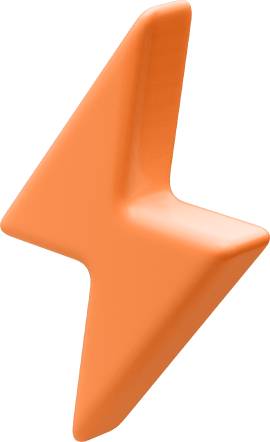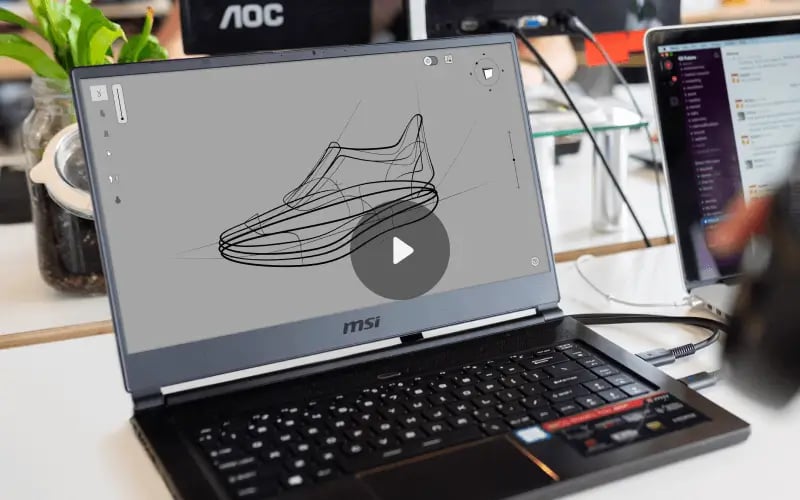$100,000
Company Expenditure
$43,500
Savings with R&D Tax Incentive
$27,500
Savings without R&D Tax Incentive
Who is the R&D Tax Incentive Program for?
The R&D Tax Incentive is a broad-based entitlement program. It is open to firms of all sizes, in all sectors, who are conducting eligible R&D.
The incentive is sector agnostic. Any industry may be eligible, assuming that eligible R&D activities are being conducted. Some examples of eligible sectors and industries are:

Manufacturing
Food & Beverage
Mining
IT & Software
Health & Medical
Tourism
Fashion

What Type Of Entity Can Claim The R&D Tax Incentive?
In order to claim the Research and Development Tax Incentive an entity needs to be:
- An incorporated Australian Entity
- Non-tax exempt corporation


What are the regulations surrounding the R&D Tax Incentive?
The R&D Tax Incentive is governed by Section 355 of the Income Tax Assessment Act 1997.
There is also guidance material published by the ATO and AusIndustry as well as several taxpayer alerts that specifically relate to the R&D Tax Incentive that help elaborate on the regulatory requirements.
How is eligibility assessed when applying for the R&D Tax Incentive?
The key to assessing an R&D Tax Incentive claim is to first identify any activities that meet the definition of a core activity (Core R&D activities are defined in section 355.25 of the ITAA 1997)
You must conduct, or plan to conduct, at least one eligible core R&D activity to register for the R&D Tax Incentive.

For an activity to be eligible it needs to meet three criteria.
It does not matter what the area of research is, the same three criteria apply:
- You need to show that you conduct your core R&D activity for the purpose of generating new knowledge. To be an eligible core R&D activity for the program, one of your substantial purposes to conduct that activity needs to be to generate new knowledge. This includes new knowledge in the form of a new or improved material, product, device, process or service.
- You must show how outcomes of your registered core R&D activity could not be known or determined in advance on the basis of existing knowledge, information or experience.
- You must show that you conduct or plan to conduct a systematic progression of work, which proceeds from hypothesis to experiments, observation and evaluation and leads to logical conclusions. Your systematic progression of work must be based on principles of established science.
From an expenditure point of view, you would then need to go through the expenses incurred in the financial year and determine which ones directly relate to the R&D activities you have identified. Generally this is driven by staff or contractor time and associated costs.
Finally you would need to look at other surrounding issues such as aggregate turnover, expenditure at risk and payments to associates.
What is a Core R&D activity?
You must conduct, or plan to conduct, at least one eligible core R&D activity to register for the R&D Tax Incentive. Core R&D activities are defined in section 355.25 of the ITAA 1997:
Core R&D activities are experimental activities:
-
whose outcome cannot be known or determined in advance on the basis of current knowledge, information or experience, but can only be determined by applying a systematic progression of work that:
- is based on principles of established science; and
- proceeds from hypothesis to experiment, observation and evaluation, and leads to logical conclusions; and
-
that are conducted for the purpose of generating new knowledge (including new knowledge in the form of new or improved materials, products, devices, processes or services)

Can supporting activities be claimed?
Yes, activities that are directly related to core R&D activities can be claimed. They must meet section 355.30(1) of the ITAA 1997. Your supporting R&D activity must have a direct and immediate relationship to one or more core R&D activities.
What is the benefit?
The benefit needs to be separated into 2 categories
 Companies with < $20 Million in aggregate turnover
Companies with < $20 Million in aggregate turnover
 companies with > $20 Million in aggregate turnover
companies with > $20 Million in aggregate turnover
R&D Tax Incentive benefit
| Turnover | Benifit | Loss Making | Profit making |
|---|---|---|---|
| < $20 million turnover | 43.50% | cash-refundable | non-refundable |
| > $20 million turnover | 38.50% | non-refundable | non-refundable |
How Long Does It Take To Receive The R&D Tax Incentive Benefit?
Estimated timeframe to receive R&D incentive benefit
From start of work from returns submission| Refundable Cash Back Benefit | 2.5 months | 4 - 6 weeks |
| Non Refundable Tax Saving Benefit | 2 months | Upon submission |
Common R&D Tax Incentive Questions
When are the submission deadlines?
The deadline for the R&D tax incentive is typically 10 months after the year end of your R&D entity.
The deadline is regarding the submission to AusIndustry which comprises the registration of your R&D activities.
| Year end | deadline |
|---|---|
| 30-Jun | 30-Apr |
| 31-Dec | 31-Oct |
Which expenses may be eligible?
When assessing eligible expenses for a R&D Tax Incentive application, a company needs to first understand their eligible R&D activities. Once these are understood then a company essentially applies monetary value to the activities.
However here is a quick list of expenses that do generally come up as eligible R&D expenses.
- R&D staff salaries and wages
- R&D contractor fees
- Industrial design
- Software development
- Formula formulation
- Prototype creation
- Product testing
- Manufacturing line automation
- Engineering costs
- Lab costs and testing
- Patent new knowledge costs
- R&D machinery
- R&D rent
- R&D overheads
- R&D utilities

How important is record keeping?
Record keeping is essential to preparing and supporting an R&D Tax Incentive claim.
AusIndustry and the ATO expect you to keep records to support your self-assessment that your activities meet the legal requirements for you to register them as core or supporting R&D activities.
If you are subject to a compliance review they will ask you to provide these records.
Your systems and processes that identify, evaluate and record your eligible R&D activities will be evidence to support the information in your application.
They will expect to see records that show how you:
- conduct your core R&D activity to generate new knowledge
- cannot know or determine the outcome of your core R&D activity using existing knowledge, information or experience
- can know or determine the outcome of your core R&D only by applying a systematic progression of work based on principles of established science
- conduct your activities within a systematic progression of work - hypothesis, experiment, observation and evaluation, leading to logical conclusions
- conduct supporting R&D activities that directly relate to at least one core R&D activity and, in some cases, for the dominant purpose of supporting a core R&D activity
They will also want to see evidence to support how you have calculated the expenses incurred on R&D activities and how those expenses directly relate to the specific activities you have registered in your application.
Things to look out for in your R&D Tax Incentive Application Form:
-
Clearly understand which are eligible R&D Activities
- Both Core and Supporting
-
Don't claim Business As Usual (BAU) expenses
-
Keeping good R&D records is essential
- Software will help in a huge way when it comes to record keeping
-
A trust can not submit a R&D application form.
-
R&D done overseas is not claimable unless you have an advanced / overseas finding
-
Connected / Affiliated entities must be paid for any R&D invoices before year end
-
Associated persons that were involved in R&D must be paid before year end
- E.g. Directors and or Shareholders
-
Superannuation must be paid before year end in order to be claimed
-
Depreciation on Pooled Assets is not claimable in an R&D application.
-
Be able to clearly demonstrate a methodology of claiming staff and contractor R&D time
-
Software does not automatically form part of your R&D grant application.
-
The Software needs to meet the eligibility criteria in order to be included in your R&D incentive application.

The Process of Making a
R&D Tax Incentive Claim
Rimon Guide You Through Every Step of the Process
Prepare for Next Claim
- Discuss procedural updates
for new R&D cycle - Suggest improvements to current procedure for further efficiency
- Discuss timing of new claim
Initial Assessment & Onboarding
- Activities assessment
- Company structure compliance
- Financial expenditure assessment
- Signing proposal & confidentiality agreement
- Activities assessment
AusIndustry Application
- R&D Technical workshop & report
- Initial financial request & calculations
- Final internal review & submission
- Receive AusIndustry registration
R&D Tax Incentive Schedule
- Request final financials & draft tax return
- Perform detailed financial work ensuring reasonability and methodical calculations
- Final internal compliance review by senior team members
Rimon Guide You Through Every Step of the Process
Prepare for Next Claim
- Discuss procedural updates
for new R&D cycle - Suggest improvements to current procedure for further efficiency
- Discuss timing of new claim
Receive R&D Benefit
- Entities < $20M in aggregate
turnover: 43.5% benefit - Cash back for a loss making entity
- Tax saving for a profit making entity
- Entities > $20M in aggregate turnover
- 38.5% tax saving / increases tax loss benefit
- Submit R&D Tax Incentive
Schedule to the client - Answer any final questions from Client’s accountant
- Inclusion of R&D tax incentive schedule in the final tax return
- Submisson of tax return to the ATO
- Activities assessment
R&D Tax Incentive Schedule
- Request final financials & draft tax return
- Perform detailed financial work ensuring reasonability and methodical calculations
- Final internal compliance review by senior team members




